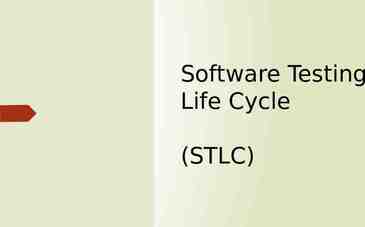13 Designing and Managing Services Marketing Management, 13th ed
33 Slides3.72 MB
13 Designing and Managing Services Marketing Management, 13th ed
Chapter Questions How do we define and classify services and how do they differ from goods? How do we market services? How can we improve service quality? How do service marketers create strong brands? How can goods marketers improve customer support services? Copyright 2009 Pearson Education, Inc. Publishing as Prentice Hall 13-2
The Mayo Clinic Considers All Aspects of a Patient’s Experience Copyright 2009 Pearson Education, Inc. Publishing as Prentice Hall 13-3
What is a Service? A service is any act of performance that one party can offer another that is essentially intangible and does not result in the ownership of anything; its production may or may not be tied to a physical product. Copyright 2009 Pearson Education, Inc. Publishing as Prentice Hall 13-4
Service Sectors Government Private nonprofit Business Retail Manufacturing Copyright 2009 Pearson Education, Inc. Publishing as Prentice Hall 13-5
General Motors’ OnStar Service Copyright 2009 Pearson Education, Inc. Publishing as Prentice Hall 13-6
Categories of Service Mix Pure Pure tangible tangible good good Good Good w/ w/ accompanying accompanying services services Hybrid Hybrid Service Service w/ w/ accompanying accompanying goods goods Pure Pure service service Copyright 2009 Pearson Education, Inc. Publishing as Prentice Hall 13-7
Service Distinctions Equipment-based or people-based Service processes Client’s presence required or not Personal needs or business needs Objectives and ownership Copyright 2009 Pearson Education, Inc. Publishing as Prentice Hall 13-8
Figure 13.2 Continuum of Evaluation for Different Types of Products Copyright 2009 Pearson Education, Inc. Publishing as Prentice Hall 13-9
Distinctive Characteristics of Services Intangibility Inseparability Variability Perishability Copyright 2009 Pearson Education, Inc. Publishing as Prentice Hall 13-10
Physical Evidence and Presentation Place People Equipment Communication material Symbols Price Copyright 2009 Pearson Education, Inc. Publishing as Prentice Hall 13-11
Disney Relies Upon Tangible Cues Copyright 2009 Pearson Education, Inc. Publishing as Prentice Hall 13-12
Blue Man Group Exhibits Inseparability Copyright 2009 Pearson Education, Inc. Publishing as Prentice Hall 13-13
How to Increase Quality Control Invest in good hiring and training procedures Standardize the service-performance process Monitor customer satisfaction Copyright 2009 Pearson Education, Inc. Publishing as Prentice Hall 13-14
Matching Demand and Supply Demand side Differential pricing Nonpeak demand Complementary services Reservation systems Supply side Part-time employees Peak-time efficiency Increased consumer participation Shared services Facilities for future expansion Copyright 2009 Pearson Education, Inc. Publishing as Prentice Hall 13-15
Figure 13.3 A Blueprint for Overnight Hotel Stay Copyright 2009 Pearson Education, Inc. Publishing as Prentice Hall 13-16
Consumer-Friendly Services Copyright 2009 Pearson Education, Inc. Publishing as Prentice Hall 13-17
Improving Service Quality Listening Reliability Basic service Service design Recovery Surprising customers Fair play Teamwork Employee research Servant leadership Copyright 2009 Pearson Education, Inc. Publishing as Prentice Hall 13-18
Figure 13.4 Root Causes of Customer Failure Copyright 2009 Pearson Education, Inc. Publishing as Prentice Hall 13-19
Solutions to Customer Failures Redesign processes and redefine customer roles to simplify service encounters Incorporate the right technology to aid employees and customers Create high-performance customers by enhancing their role clarity, motivation, and ability Encourage customer citizenship where customers help customers Copyright 2009 Pearson Education, Inc. Publishing as Prentice Hall 13-20
Figure 13.5 Three Types of Marketing in Service Industries Copyright 2009 Pearson Education, Inc. Publishing as Prentice Hall 13-21
Table 13.1 Factors Leading to Customer Switching Behavior Pricing Inconvenience Core Service Failure Service Encounter Failures Response to Service Failure Competition Ethical Problems Involuntary Switching Copyright 2009 Pearson Education, Inc. Publishing as Prentice Hall 13-22
Figure 13.6 Service-Quality Model Copyright 2009 Pearson Education, Inc. Publishing as Prentice Hall 13-23
Gaps That Cause Unsuccessful Service Delivery Gap between consumer expectation and management perception Gap between management perception and service-quality specifications Gap between service-quality specifications and service delivery Gap between service delivery and external communications Gap between perceived service and expected service Copyright 2009 Pearson Education, Inc. Publishing as Prentice Hall 13-24
Determinants of Service Quality Reliability Responsiveness Assurance Empathy Tangibles Copyright 2009 Pearson Education, Inc. Publishing as Prentice Hall 13-25
Best Practices Strategic Concept Top-Management Commitment High Standards Self-Service Technologies Monitoring Systems Satisfying Customer Complaints Satisfying Employees Copyright 2009 Pearson Education, Inc. Publishing as Prentice Hall 13-26
Figure 13.7 Importance-Performance Analysis Copyright 2009 Pearson Education, Inc. Publishing as Prentice Hall 13-27
Table 13.3 Customer Importance and Performance Ratings for an Auto Dealership Copyright 2009 Pearson Education, Inc. Publishing as Prentice Hall 13-28
Developing Brand Strategies for Services Choosing Brand Elements Establishing Image Dimensions Devising Branding Strategy Copyright 2009 Pearson Education, Inc. Publishing as Prentice Hall 13-29
Customer Worries Failure frequency Downtime Out-of-pocket costs Copyright 2009 Pearson Education, Inc. Publishing as Prentice Hall 13-30
Table 13.4 Top Customer Service Providers USAA Four Seasons Hotels Cadillac Nordstrom Wegman Food Markets Edward Jones Lexus UPS Enterprise Rent-ACar Starbucks Ritz-Carlton Amica Insurance Southwest Airlines Copyright 2009 Pearson Education, Inc. Publishing as Prentice Hall 13-31
Marketing Debate Is service marketing different from product marketing? Take a position: 1. Product and service marketing are fundamentally different. or 2. Product and service marketing are highly related. Copyright 2009 Pearson Education, Inc. Publishing as Prentice Hall 13-32
Marketing Discussion Colleges and universities can be classified as service organizations. How can you apply the marketing principles developed in this chapter to your school? Do you have any advice as to how it could become a better service marketer? Copyright 2009 Pearson Education, Inc. Publishing as Prentice Hall 13-33






































